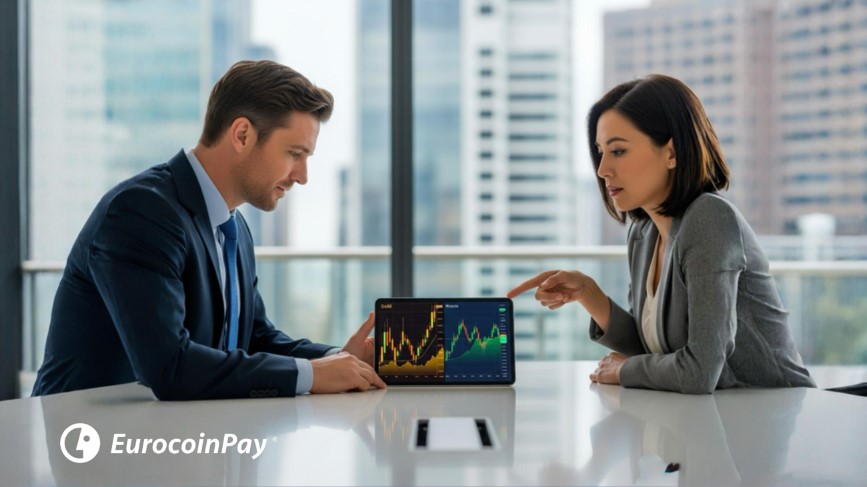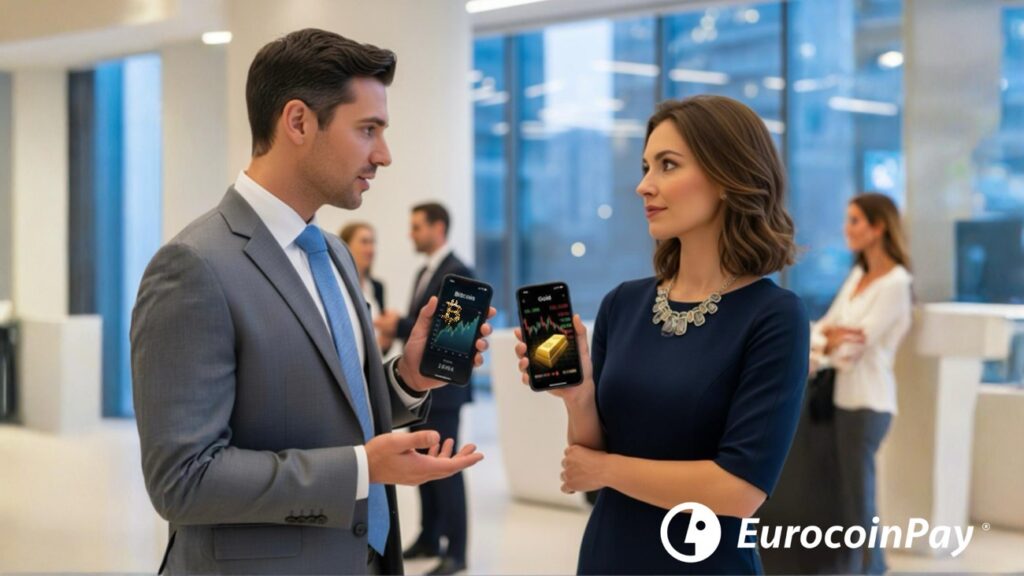Gold vs. Bitcoin: A rivalry for the store of value
The battle to be the world’s primary store of value pits a titan with thousands of years of history, gold, against a digital disruptor, Bitcoin. Although both assets share the quality of being scarce and serve as protection against inflation and the devaluation of fiat currencies, their fundamental differences mark a fascinating rivalry in the world of investment. Below, we analyse the key arguments that define this competition.
Gold: the age-old store of value
Gold is not just a precious metal; it is an asset that has been the cornerstone of wealth and economic stability for over 5,000 years. Its value is based on undeniable physical properties and a proven history.
- Tangibility and durability: Unlike a digital asset, gold is a physical commodity that you can own, touch and store. It does not corrode, it does not deteriorate over time and its value is universally recognised. This tangibility gives it a sense of security that appeals to conservative investors.
- Proven track record: Gold has demonstrated its ability to preserve purchasing power through countless economic crises, geopolitical conflicts, and regime changes. It has been a safe haven for investors when traditional markets become volatile.
- Liquidity and global acceptance: The gold market is vast and deeply established, with high liquidity that allows investors to buy and sell large quantities anywhere in the world. In addition, it has industrial and jewellery uses, which add intrinsic value.
- Central bank reserve: Confidence in gold is reinforced by the fact that central banks and financial institutions hold it as part of their reserves to stabilise their monetary systems.

Bitcoin: the “digital gold” of the 21st century
Bitcoin emerged after the 2008 financial crisis with the mission of being a digital alternative to the traditional monetary system. Its proponents argue that, although it lacks history, its inherent properties make it an improved version of gold.
- Programmed scarcity: The supply of Bitcoin is strictly limited to 21 million units, a scarcity that cannot be altered by any entity. This feature, often called ‘digital scarcity,’ is the basis of its value proposition and protects it from artificial inflation.
- Portability and divisibility: Unlike physical gold, which can be difficult to transport and store securely, Bitcoin is a digital asset that can be transferred anywhere in the world instantly and at minimal cost. Furthermore, it is highly divisible (up to eight decimal places), facilitating transactions of any size.
- Decentralisation and security: Bitcoin operates on a decentralised network that is not controlled by any government or financial institution. This feature protects it from censorship and confiscation. Its security is based on a network of miners and blockchain technology, making it extremely difficult to counterfeit.
- Growth potential: As a relatively new asset, Bitcoin has significant growth potential if its adoption continues to expand among retail and institutional investors. Its high volatility, while risky, has also offered asymmetric returns that far exceed those of gold over the past decade.

The big question: Which is the best option?
The answer to this question is not simple and, to a large extent, depends on the investor’s profile.
For investors who value stability, value stability, history and tangible security, gold remains the traditional choice. It is an asset with a history of resilience and its performance in times of uncertainty is well documented.
For those seeking innovation, high growth potential and a store of value without intermediaries, Bitcoin represents a unique opportunity. Its digital characteristics make it more efficient in terms of transfer and storage.
The reality is that gold and Bitcoin can coexist, and in fact, many investors are choosing to diversify their portfolios with both assets. While gold has a much larger market capitalisation, Bitcoin has proven its ability to capture the attention and capital of a new generation of investors seeking an alternative to traditional financial systems. The rivalry does not appear to be zero-sum, but rather an evolution where ‘hard money’ adapts to the digital age.
Disclaimer: The information set forth herein should not be taken as financial advice or investment recommendation. All investments and trading involve risk and it is the responsibility of each individual to do his or her due diligence before making a decision.




